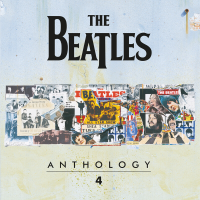Home » Jazz Articles » Extended Analysis » The Black Butterflies: The Black Butterflies: Rainbows for Ramon
The Black Butterflies: The Black Butterflies: Rainbows for Ramon
 The Black Butterflies
The Black ButterfliesRainbows for Ramon
Self Produced
2012
Judging by its title alone, some might expect Rainbows for Ramon, the sophomore release by The Black Butterflies, to be a flighty affair that trills off into flowery musical fields fit for skipping unicorns. It is not this (thankfully), even though joyful melodic lines feature prominently on the disc. In this case, the album's cover might better serve those looking to make quick adjudication: painter Ima Montoya's image of a bold, bright rainbow arching over a teeming array of Miró-like critters, bustling in a colorful, attractive tussle offers fine visual representation of this percussion-driven music—one that launches desperate shrieks and lullabies alike.
Drummer Kenny Wollesen and percussionists Fred Berryhill and Bopa "King" Carre, with added percussion help from saxophonist Tony Larokko, provide all the roiling, clapping energy heard on the band's debut, 1 de Mayo (Self Produced, 2010). But the departure of electric keyboardist Dan Tepfer and the addition of pianist Levi Barcourt and vibraphonist and veteran avant-jazzer Karl Berger, shifts the band away from the swampy funk groove that warmed much of that first release in exchange for a brighter sound that's both more traditionally Latin and more traditionally jazz.
Berger's composition for the date, "Together," a fairly straight-ahead bop piece, speaks not only to this affinity for tradition while experimenting, not only to the melding of Latin and jazz music (without, it must be said, overdosing on the Latin and propelling the whole into something akin to the mad stasis of salsa), but also to the band's general mode of operation. For while this is, without question, bandleader and saxophonist Mercedes Figueras's show, the music is highly dependent on the interaction of the group's members, especially in duet. Figueras and Larokko are foils on most of the tunes, Larokko's sax often emerging from the percussive bramble to counter Figueras' melodic playing with wilder forays and opening the space for the pair to twist complementary abstractions. The closing track, a Larokko composition titled "Balafon Madness: Africa meets China"—a weighty, nearly 13-minute affair that steadily builds in intensity from its solo chimes opening—offers one of the more intriguing tandems. Larokko is actually on percussion here, playing the wooden keys of the titular balafon, but bassist Nick Gianni shifts to flute, blowing notes that might emerge from any number of indigenous cultures—Asian, African, American—while Figueras fashions intertwining Chinese-flavored melodies from her alto sax.
Yet Figueras' compositions are at the heart of the album, and they swim with an easy lyricism that allows both airy and abrasive readings, and the effortless, flowing transition from one sensibility to the next. The title track, a lullaby of sorts written for Figueras' son, does, in fact, have lyrics—a refrain consisting primarily of the title's words, repeated by male voices to close the piece. While the rest of the melody—what might qualify as the verses—calls out for lyrics either yet to be written or simply left unsung here. "The 3 Monkeys," lifting from voice- and instrument-generated jungle noises, for which the group seems to have a penchant (check out "Yah-Yah" from its debut), links a light, memorable melody with a more terse bridge, that quickly gives way to some of Larokko and Figueras' most heated and abstract tangling (though the piece easily flows back to the melody when the time comes). The melody of Figueras' third composition, "Wind Chimes," is rather more sullen, bittersweet, and appropriately pairs the saxophonist with the chiming, single-noted runs from Berger's vibes.
The band also reaches back into the jazz catalog to cover two tunes from years past—the first a well-worn Gershwin standard, the second, a tangential Pharoah Sanders piece. The latter, "Lumkili," which, appropriately, butts up against the experimental "Balafon Madness," is handled with urgent aplomb, and features Larokko over a sea of storming drums, nice call-and-response interaction between the saxophonists that morphs into impassioned discussion, and perhaps Barcourt's most abstract renderings, though his playing, as elsewhere, continues to feature touches of Cuban bolero. The Gershwin standard is another lullaby: "Summertime." But here the song is played as a cabaret number—an altogether different "hush now, baby." It's launched by Gianni's solo bass, his notes bending deeply into a sultry pulse. Berger's melodica provides a European café feel over a Latin beat, and Figueras and Barcourt both give blues-drenched solos. But it's Figueras' singing that marks the number, when, at the song's midpoint, she turns chanteuse and delivers the opening verse with a thickly accented, Eartha Kitt smolder. It can sound incongruous at first (and may remain so for many listeners), but it's an inventive spin on a classic that yet refuses to be put to bed.
The album is full of many such surprises, but its greatest surprise may be the ease with which The Black Butterflies, despite its adjusted lineup, continues to thread an array of musical genres and sensibilities into a music of natural power and vibrancy.
Tracks: Intro to the 3 Monkeys; The 3 Monkeys; Together; Summertime; Rainbows for Ramon; Wind Chimes; Lumkili; Balafon Madness: Africa Meets China.
Personnel: Mercedes Figueras: soprano, alto saxophone, tenor saxophone; Tony Larokko: soprano saxophone, alto saxophone, percussion; Nick Gianni: bass, flute; Levi Barcourt: piano; Bopa "King" Carre: bongos; Fred Berryhill: djembe, percussion; Kenny Wollesen: drums, percussion; Karl Berger: vibes, melodica.
Track Listing
Intro to the 3 Monkeys; The 3 Monkeys; Together; Summertime; Rainbows for Ramon; Wind Chimes; Lumkili; Balafon Madness: Africa Meets China.
Personnel
The Black Butterflies
band / ensemble / orchestraMercedes Figueras: soprano, alto and tenor saxophone; Tony Larokko: soprano and alto saxophone, percussion; Nick Gianni: bass, flute; Levi Barcourt: piano; Bopa "King" Carre: bongos; Fred Berryhill: djembe, percussion; Kenny Wollesen: drums, percussion; Karl Berger: vibraphone, melodica.
Album information
Title: The Black Butterflies: Rainbows for Ramon | Year Released: 2012 | Record Label: Self Produced
Tags
About The Black Butterflies
Instrument: Band / ensemble / orchestra
PREVIOUS / NEXT
Support All About Jazz
 All About Jazz has been a pillar of jazz since 1995, championing it as an art form and, more importantly, supporting the musicians who make it. Our enduring commitment has made "AAJ" one of the most culturally important websites of its kind, read by hundreds of thousands of fans, musicians and industry figures every month.
All About Jazz has been a pillar of jazz since 1995, championing it as an art form and, more importantly, supporting the musicians who make it. Our enduring commitment has made "AAJ" one of the most culturally important websites of its kind, read by hundreds of thousands of fans, musicians and industry figures every month.

























